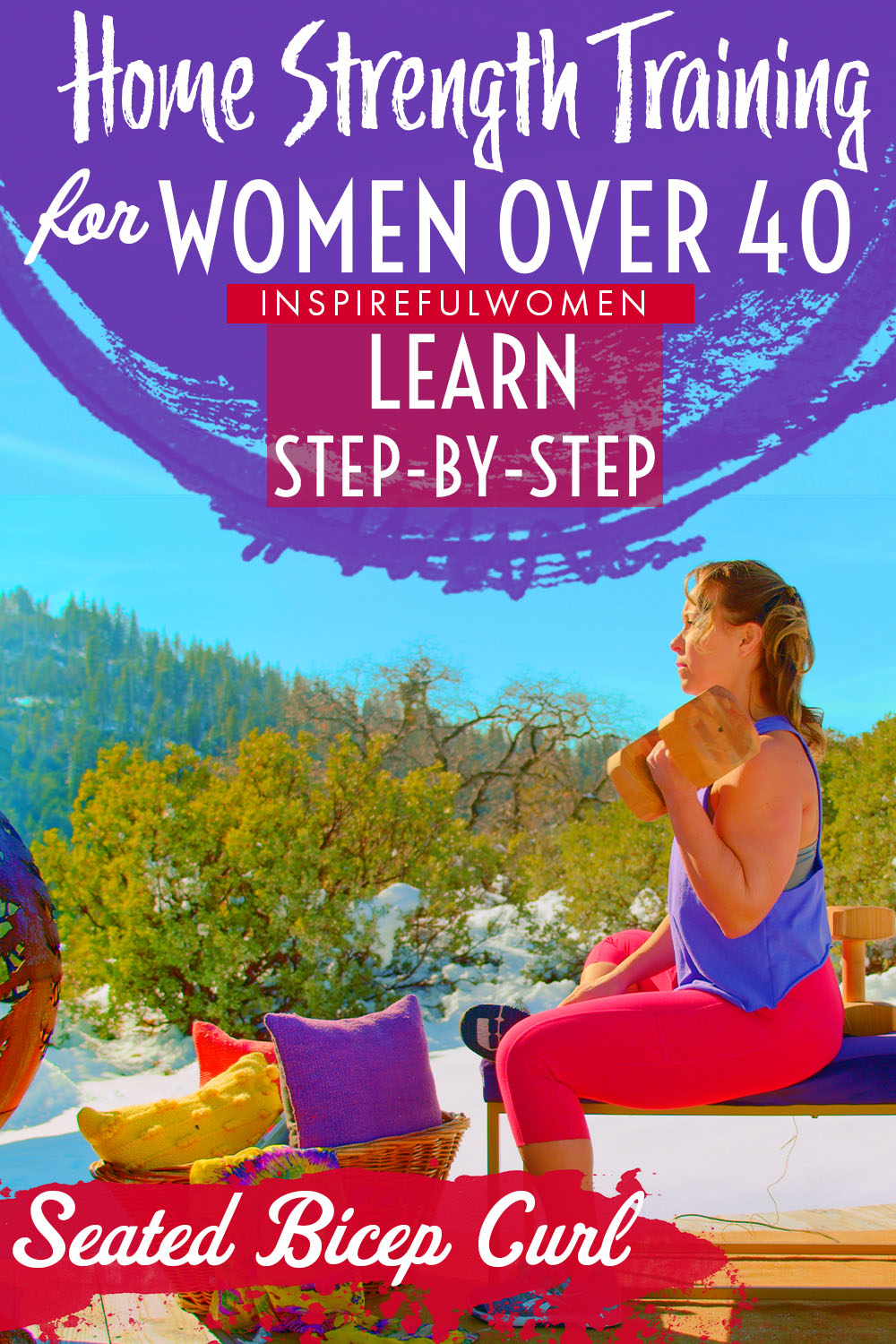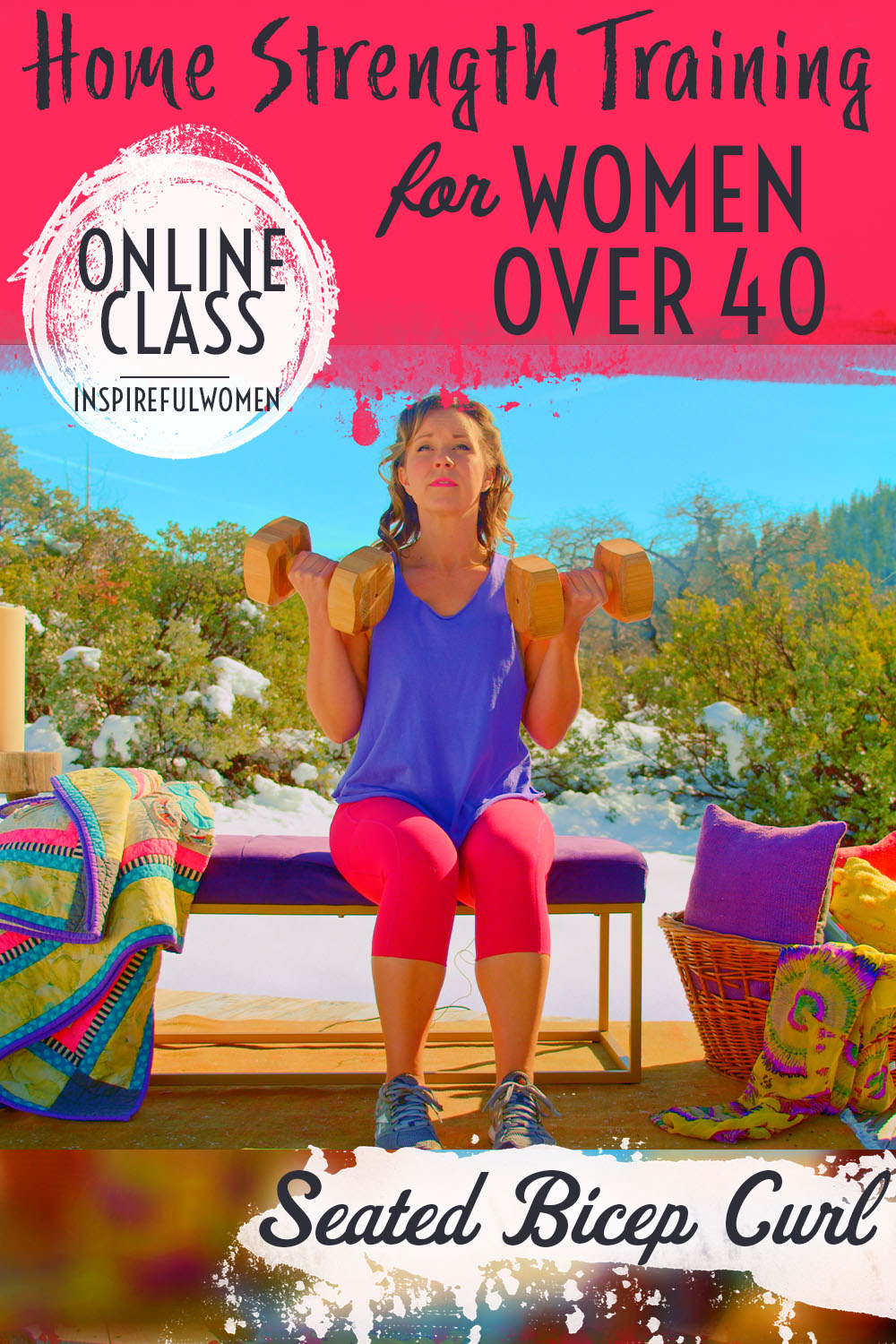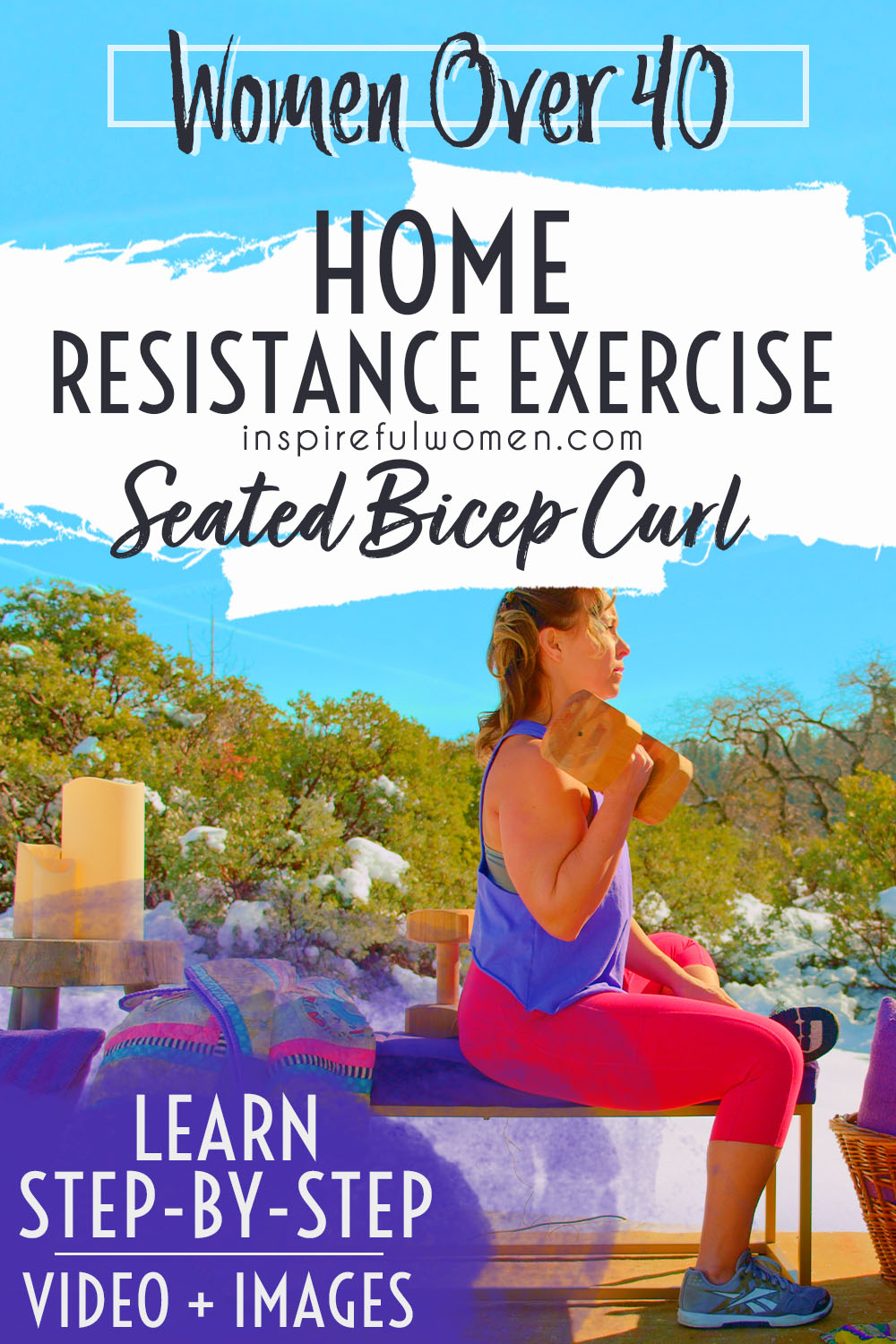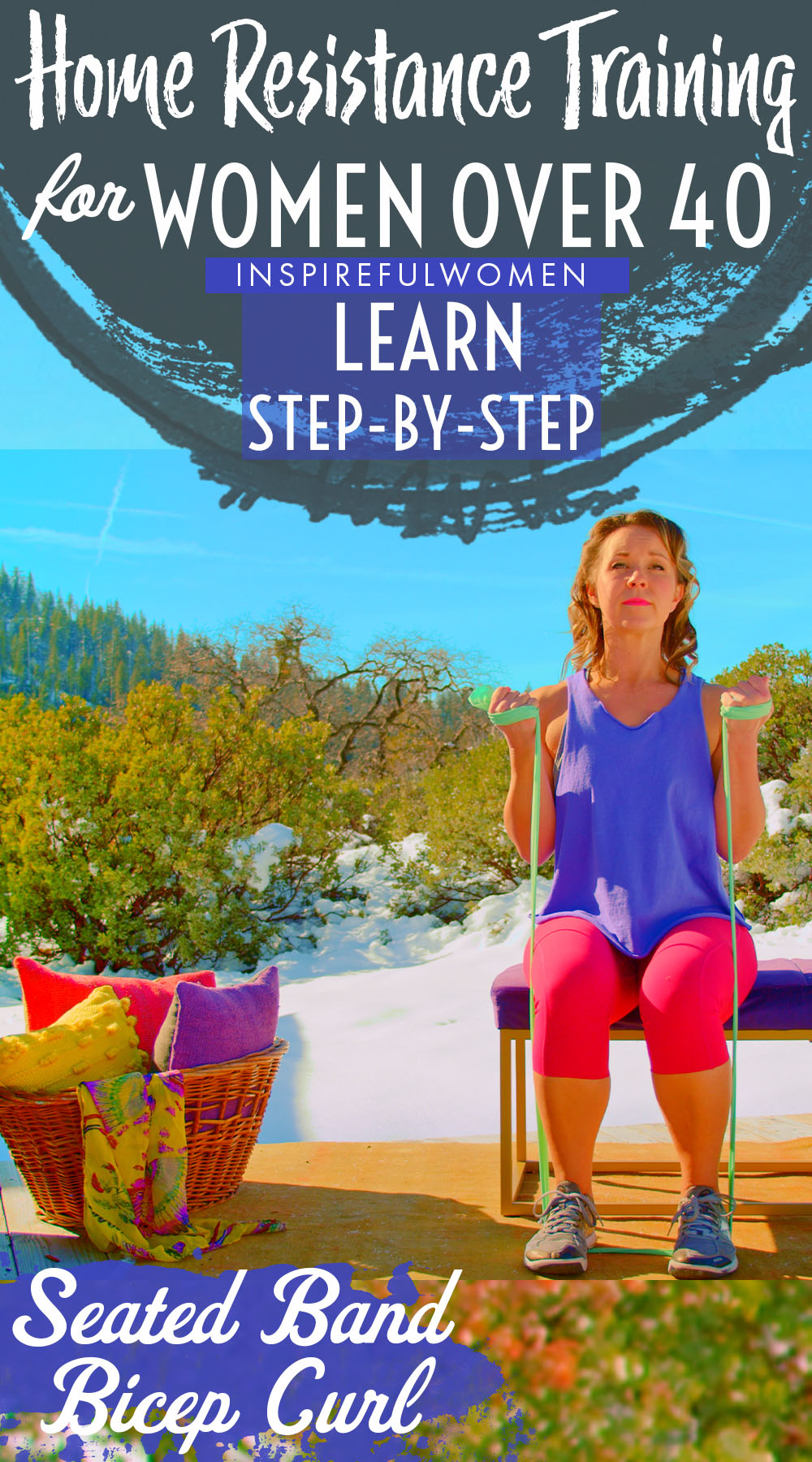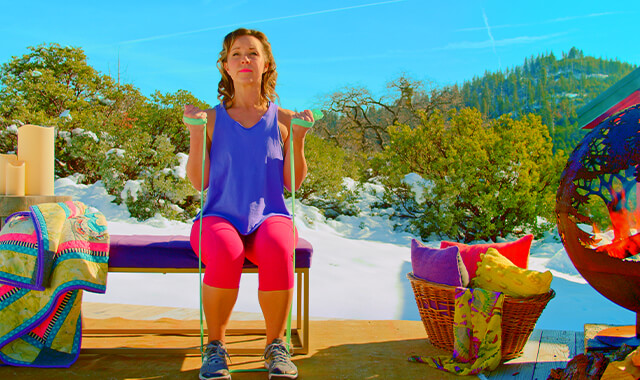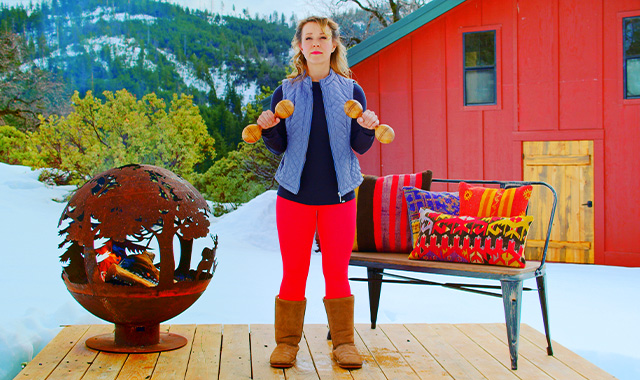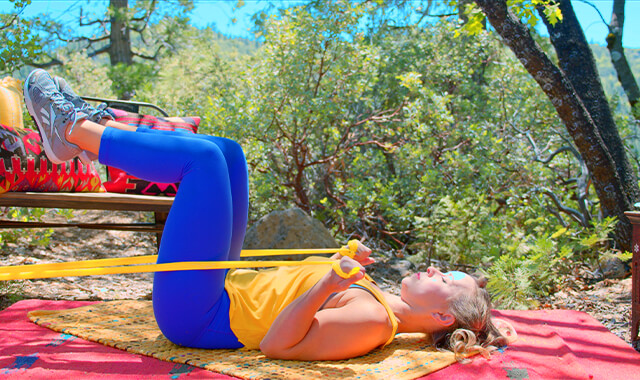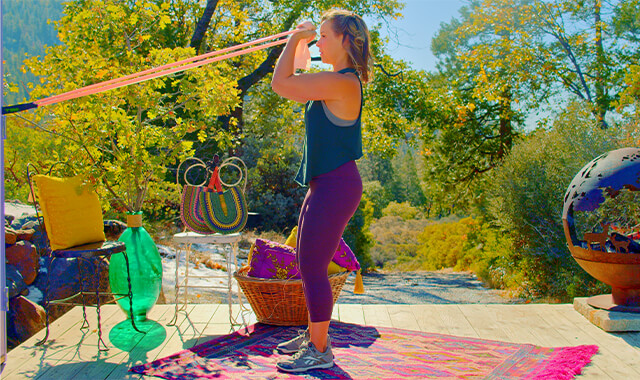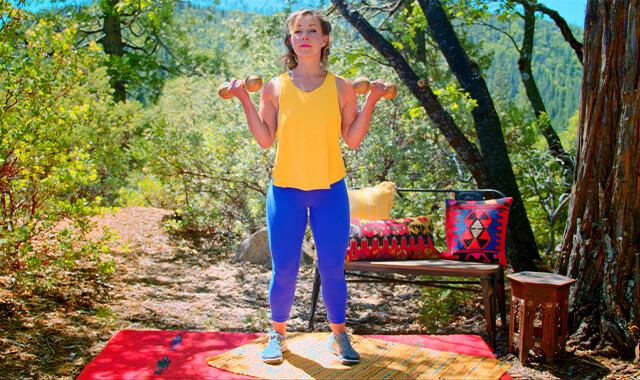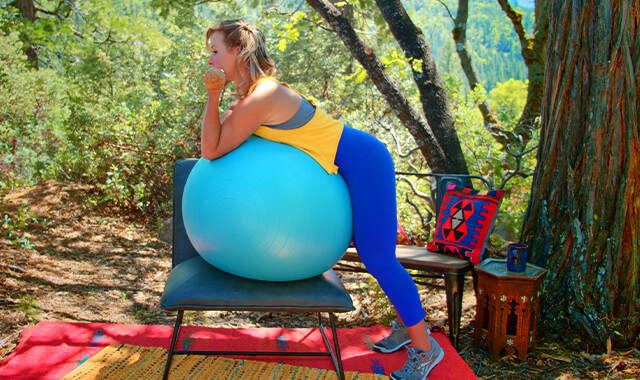Seated Dumbbell Bicep Curl
How to Do the Seated Supinated Dumbbell Biceps Curl | In-Depth Guide [VISUAL LEARNERS] Beginner
Proper Form, Common Mistakes, & Variations | Home Resistance Training
WHAT DO YOU WANT TO SEE?
QUICK DEMO
QUICK DEMO
MUSCLES THIS WORKS
MUSCLES
MAIN MUSCLES WORKED IN Seated Dumbbell Bicep Curls
BICEPS BRACHII
OTHER MUSCLES WORKED:
- FOREARMS (supinator)
- Brachialis
STARTING POINTERS
Starting Pointers
WHAT WE'RE DOING TODAY
Other names for this exercise: Supinated Bicep Curl - Dumbbell
ALL WE'RE DOING:
Sitting and bending your elbows while holding weights.
The Seated Supinated Bicep Curl is a classic and effective exercise for isolating and strengthening the biceps. The most common errors people make with biceps curls are leaning or swaying the body and swinging the arms. Seating down helps to prevent both, allowing you to focus on the movement at the elbows and the biceps muscles working. Moving the feet closer together will be slightly more difficult and further apart will be easier.
HOW TO DO THE EXERCISE
LOOKS
HOW Seated Dumbbell Bicep Curls SHAPE OUR BODY
Bicep curls will tone and give you muscle definition in the front of your upper arm (where your bicep is haha!)
It helps give a curvy yet FIRM sculpted look to the arm.
PROPER FORM
PROPER FORM: Seated Dumbbell Bicep Curls
EQUIPMENT, SETS & REPS
EQUIPMENT
Chair or Bench
SUGGESTED STARTING WEIGHT FOR WOMEN:
8-10 pounds each hand
SETS & REPS:
1-2 sets of 8 reps
PACE:
Slow descent for the eccentric muscle activation, quick (but controlled) return to standing.
BODY POSITION
BODY POSITION FOR THE Seated Dumbbell Bicep Curl
Sit on the edge of a chair with your feet on the floor.
BODY STANCE: Neutral spine (includes cervical spine). Sternum lifted. Shoulder blades in and down the back, chest open.
ARM POSITION: Upper arm tucked to sides of your body, elbows straight down - you must be sitting far enough forward to let your arms start straight down, or use a bench or narrow chair - with one arm hanging straight down on either side.
GRIP: Palms face forward - forearm supinated.
HOW TO DO
HOW TO DO Seated Dumbbell Bicep Curls
CUE: Isolate the movement to your elbow joint.
Keep your upper arms still. Bend your elbows to lift the dumbbells up towards your shoulders.
Slowly lower the weights back down to the starting position.
HOW TO SAFELY GET OUT OF THE EXERCISE
With straight elbows, squat down and set the weights on the floor.
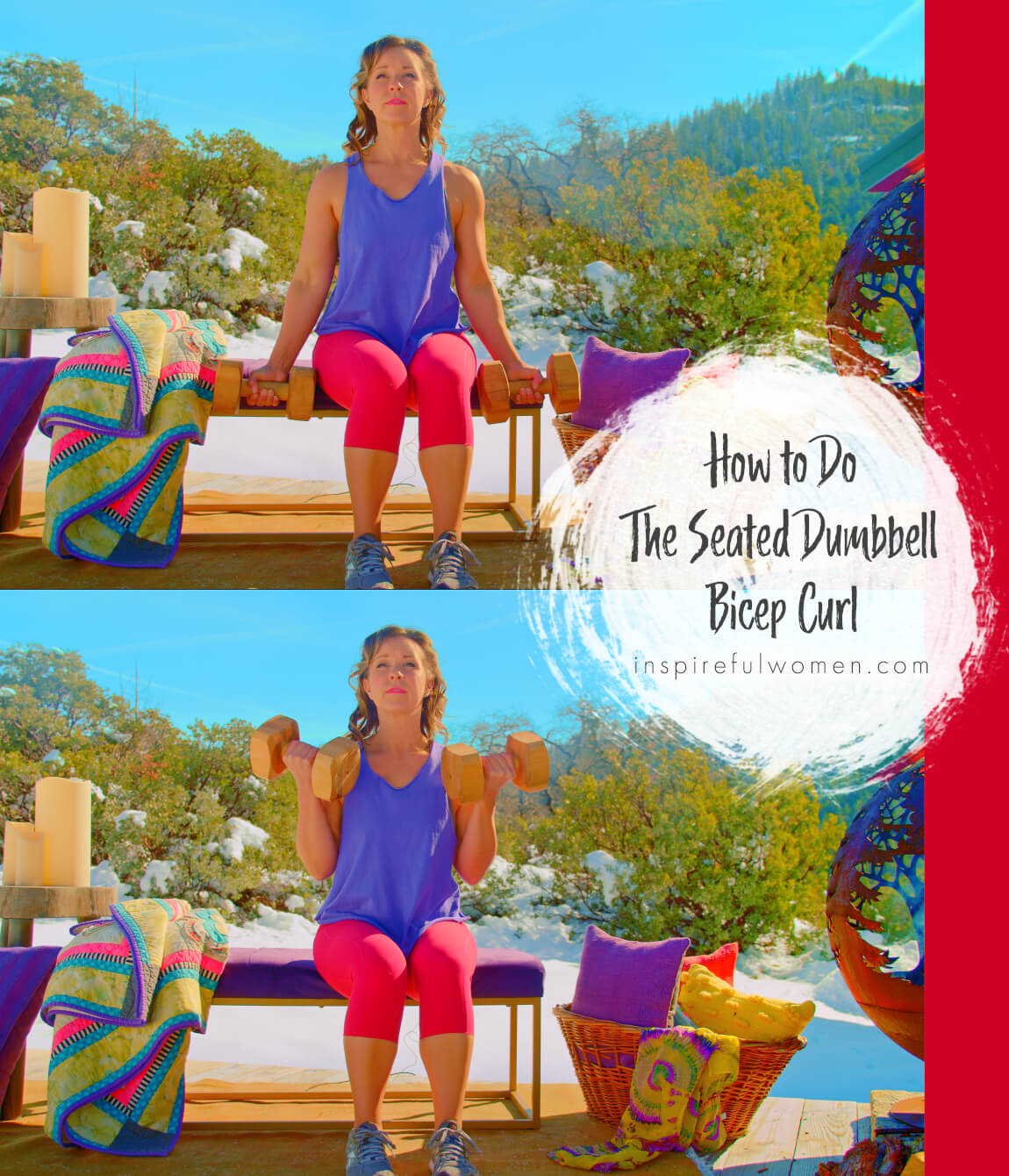
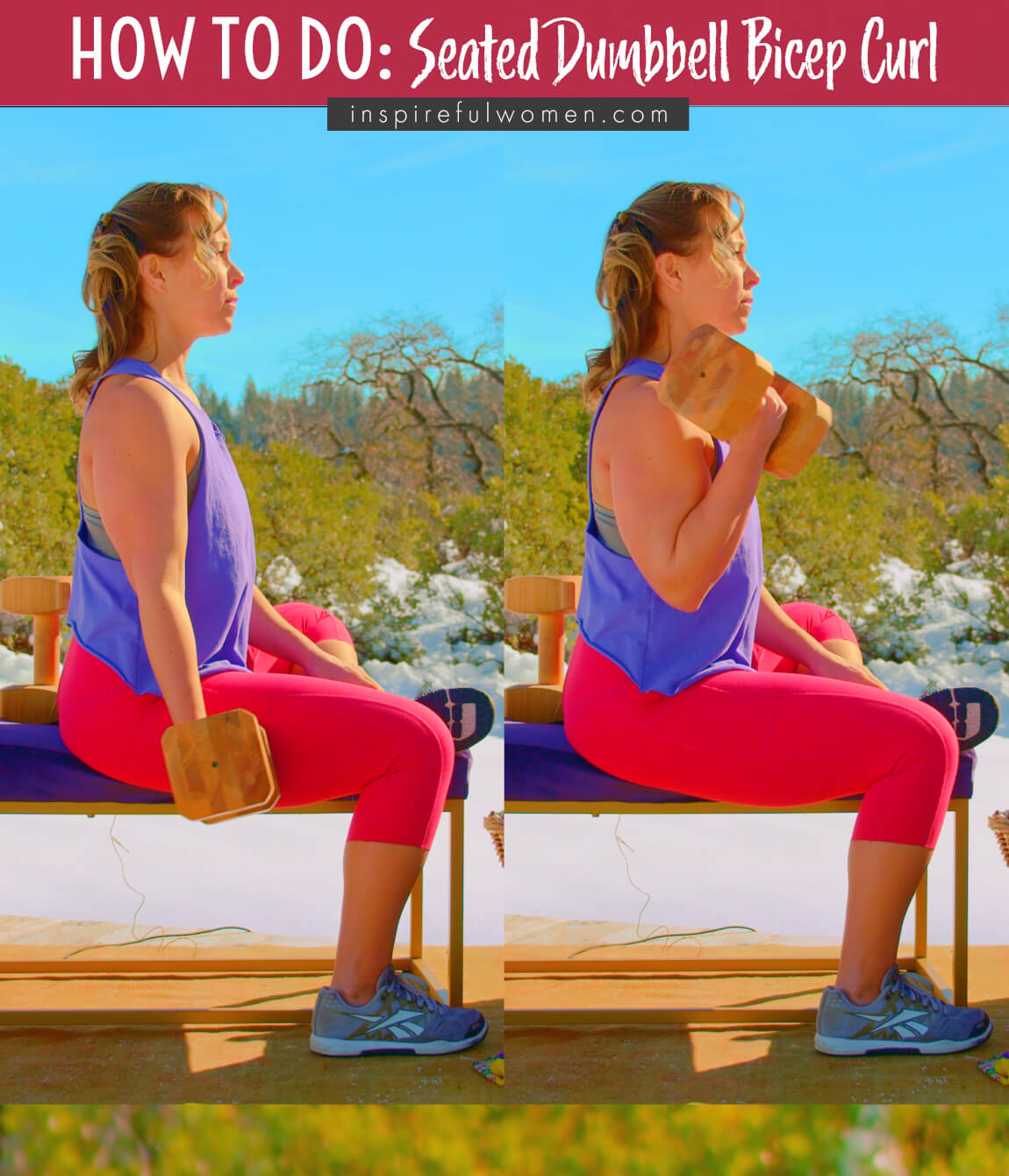
COMMON MISTAKES
COMMON MISTAKES
WHAT TO AVOID WITH THE Seated Dumbbell Bicep Curl
KEY TIP:
Guess what? Good news! Many avoids are the same for most movements. Once you learn the basics, there's really only a few extra avoids for each individual movement.
1. Avoid rounded posture
AVOID: Avoid leaning back or shifting your weight.
I was guilty of trying this strategy myself at first - it can seem like a good idea to kind of leaaaannnnn back to counterbalance yourself with the dumbbells in front of you. Butttt, according to the physical therapist who is the main content writer of this site, a slight backward lean would only make the biceps muscles work harder if the arms were held in a bit of flexion. There are better ways of doing this with less chance of straining your lower back.
WHY NOT?
- This will decrease the work being done by the muscles of the arms and upper back
- This is a common way the brain will try to make the exercise easier - using your body weight to help pull the hands up.
WHAT TO DO:
- Your chest should be squared to the front, with no rounding or rotation of the upper back.
- The shoulder blades do rotate during the movement but the thoracic spine and ribcage do not.
- The hips stay squared to the front.
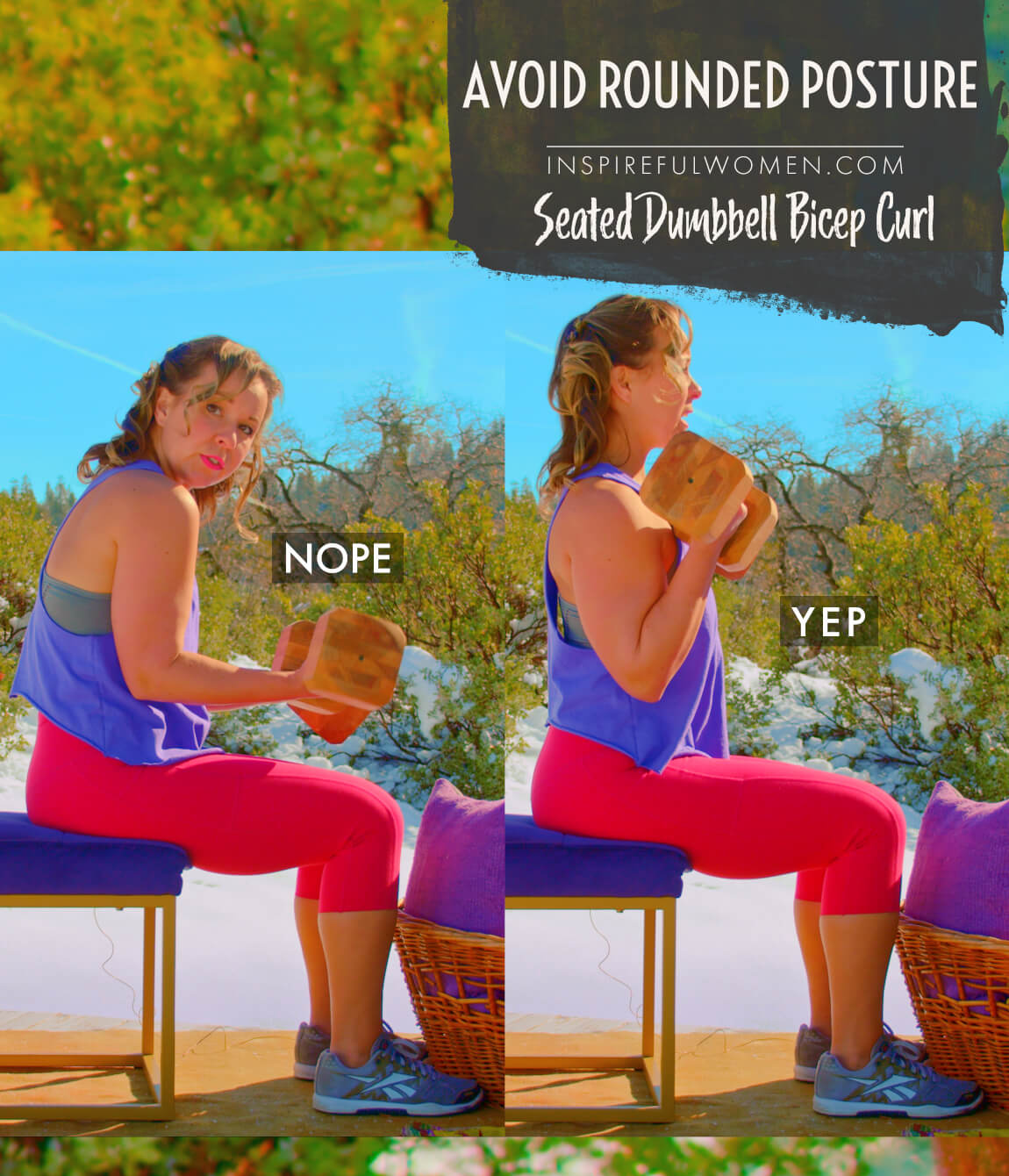
2. Avoid Moving Elbows Shoulder Joint
AVOID: Avoid letting your elbows move out to the sides
WHY NOT?
- This will change the downward pull of gravity and will increase the activity of the shoulder.
WHAT TO DO:
- The upper arm should be resting on your sides, not moving.
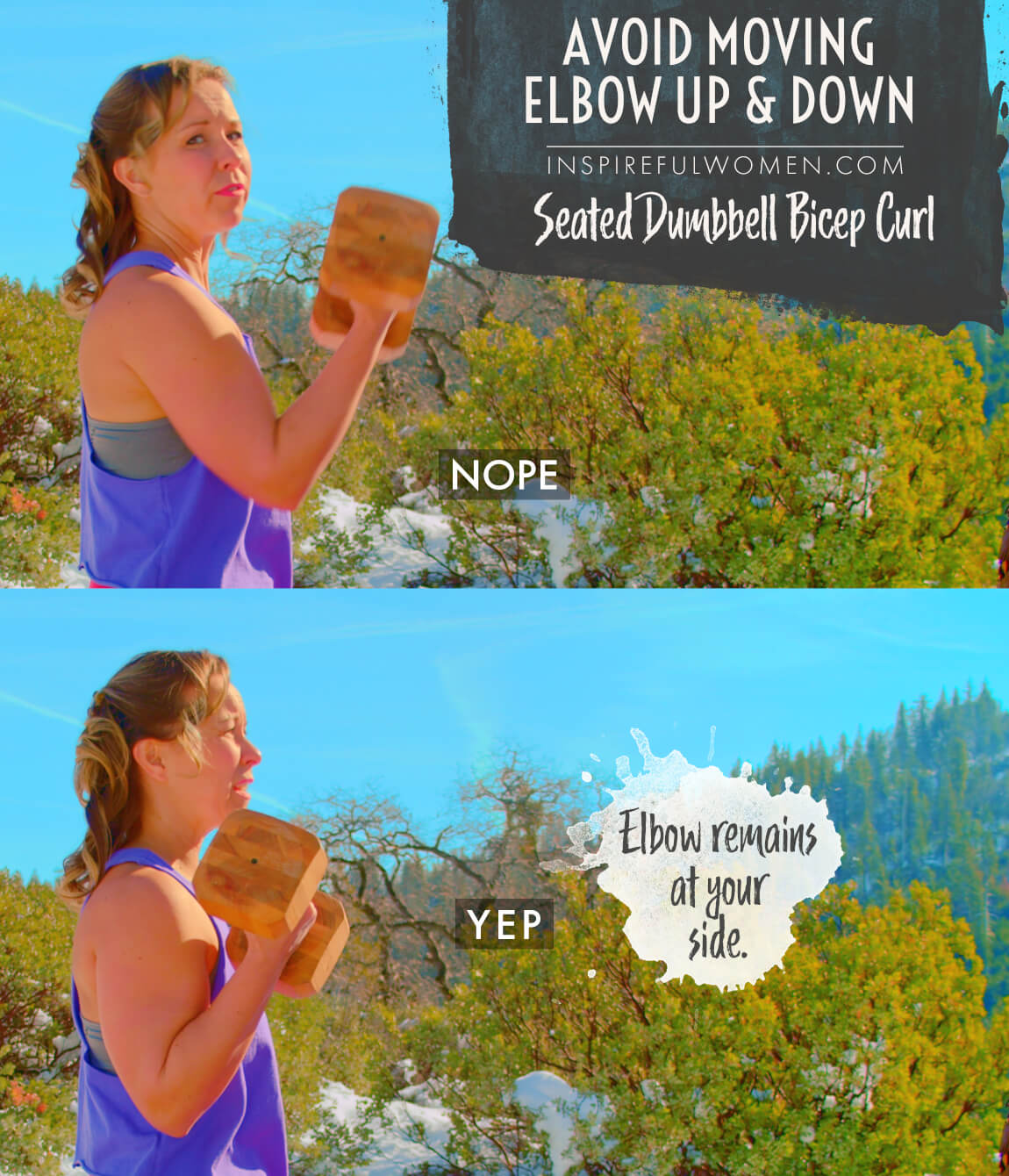
VARIATIONS
VARIATIONS
VARIATIONS OF Seated Dumbbell Bicep Curls
ISO Hold
ISO Hold
Isometric hold at 90 degrees of elbow bend (called elbow flexion).

LEG STANCE VARIATION
Wide or Narrow Stance Seated Bicep Curl
WIDE STANCE: Easier and more stable.
NARROW STANCE: Less table and more core muscle activity.
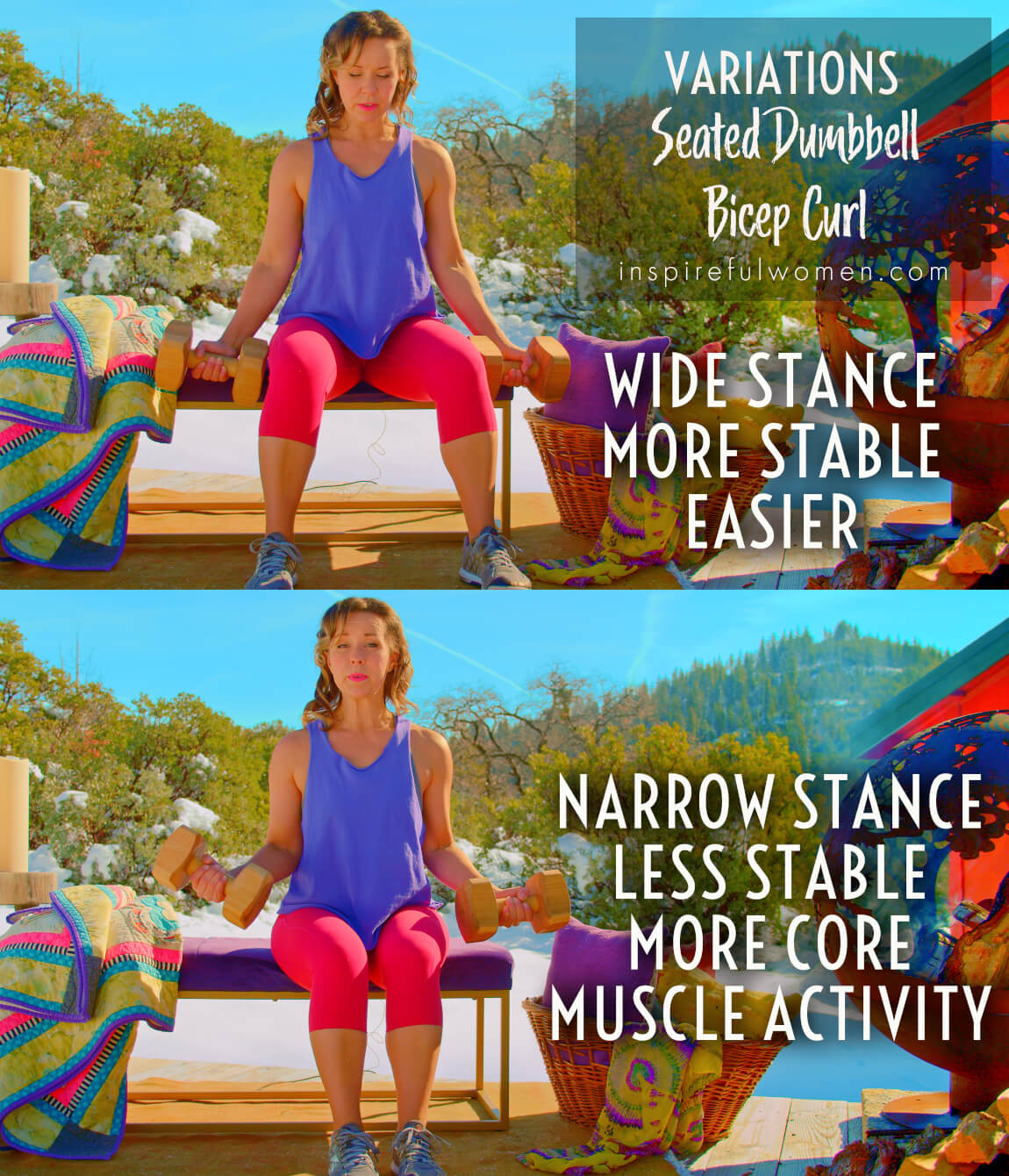
WHAT WE'RE DOING TODAY
WHAT & WHY
BENEFITS OF TRAINING THE BICEPS BRACHII
WHAT
The biceps brachii (bicep means that the muscle has two heads connecting at different places, and brachii - meaning arm) is the big muscle lying on the upper part of the front of the arm - between the elbow and the shoulder. This is probably the most well-known muscle of the arm - sometimes referred to as the beach muscle. The main function of the biceps brachii (not to be confused with the biceps femoris which is one of the hamstring muscles) is to bend (flex) the elbow, moving the hand closer to the body.
The biceps brachii also can rotate the forearm so that the palm is facing up. The rotation of the forearm is due to one of two long bones in the forearm rotating across the other. This is called supination.
Most of the exercises for the biceps muscle most effectively are movements that combine bending (flexing) the elbow with rotating the forearm to a palm-up position (supination). The bicep is a big, powerful muscle. Exercises that target this muscle can usually be done with quite a bit of resistance.
WHY BOTHER DOING IT?
WHY
WHY DO WE EVEN CARE?
Crossfitting for 8 years we never did specific bicep work, and most of the movements didn’t really work your biceps much. Once I started doing bicep curls regularly, I noticed a big difference. One day I needed to carry a 5-gallon bucket of stuff in each hand for quite a long distance. I was amazed at how much easier it felt than a while back! That’s from the biceps being stronger. This is also helpful for holding other things in your arms - a stack of books, children, getting all the groceries into the house in one trip, pulling heavy pans full of turkey and potatoes out of the oven, carrying a load of firewood, or a stack of lumber.
The biceps brachii crosses the shoulder joint, so it is able to lift the arm up (shoulder flexion). Since it crosses both the elbow and the shoulder it plays a role in stabilizing those joints. The job of the arm is to move the hand to where it needs to be and then to hold the arm still as the hand does what it needs to do. The biceps are extremely important for both moving the arm through an endless number of positions and holding it still. Strong biceps will make everyday life activities easier and will improve the health of your elbows and shoulders.
EVERYDAY LIFE
EVERYDAY LIFE &
MUSCLE FUNCTION
HOW WE USE OUR BICEPS BRACHII IN EVERYDAY LIFE
1. BENDING THE ELBOW (ELBOW FLEXION)
- Eating
- Lifting glass for drinking
- Dressing
- Lifting
- Carrying
- Washing/brushing hair
- Stirring
- Painting
- Brushing your teeth
- Weeding
- The list is pretty much endless...
2. TURNING YOUR FOREARM UP (SUPINATION)
- Turning a doorknob
- Using a screwdriver
- Turning a key
- Turning a spigot
- Receiving change
- Carrying a plate
3. LIFTING THE ARM (SHOULDER FLEXION)
- Reaching up
- Dressing
- Pushing a window up
- Washing windows
- Lifting up to the front - kids, boxes
- Carrying in front: kids, groceries, books
4. STABILIZING THE ELBOW AND SHOULDER
- Writing
- Knitting
- Reading a book
- Using a screwdriver
- Holding items in front of you - carrying a heavy box, pushing a wheelbarrow
HOW TO FEEL WHAT MUSCLE IS WORKING
How to Feel What Muscle is Working
Bend your elbow. Place the other hand on the upper arm with the bent elbow. Lift a heavy object with the arm - you will feel the biceps contract under your hand.
SCIENCY STUFF
ALLLL MUSCLES & WHEN
ALL MUSCLES WORKING & WHEN DURING THE Seated Dumbbell Bicep Curl
The biceps brachii and the brachialis, work concentrically to bend the elbow. The brachioradialis does not contribute unless power or speed is needed – for quicker movements or heavy loads.
The supinator will be active (isometrically) with the biceps brachii to hold the forearm in supination. Wrist flexors (n palmaris longus, flexor carpi radialis, flexor carpi ulnaris) hold the wrist in neutral.
The biceps brachii and brachialis work eccentrically to straighten the elbows and return to the starting position.
PIN IT FOR LATER!

